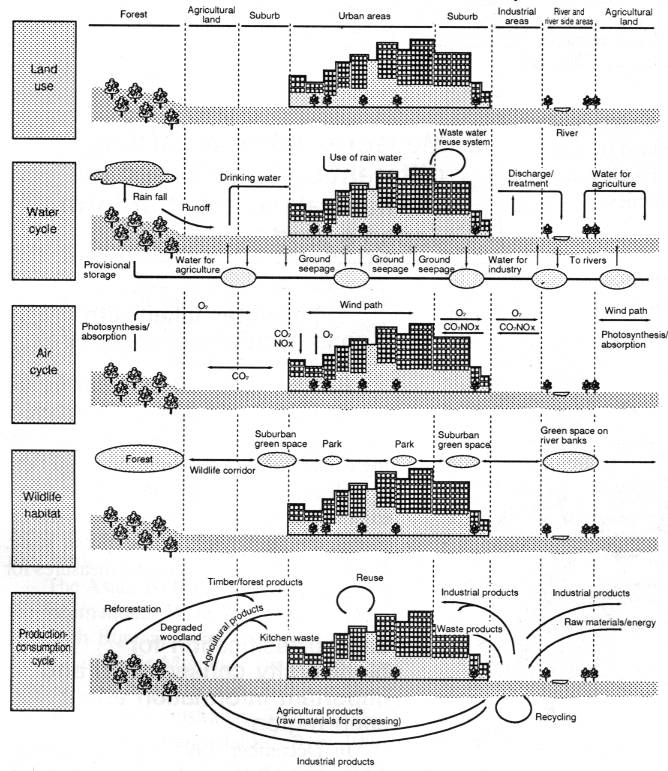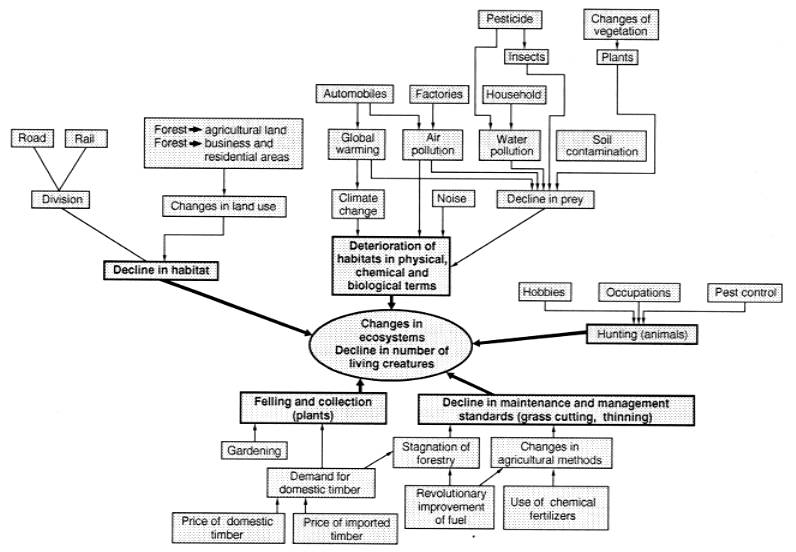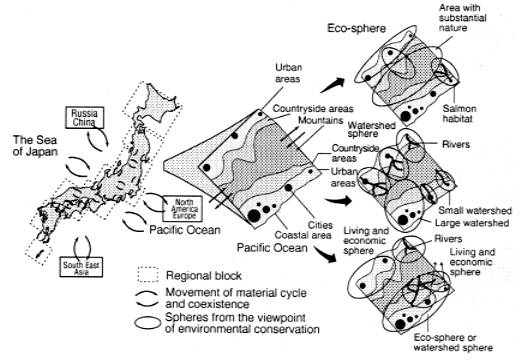Chapter II -1 :Quality of the Environment in Japan 1998
Chapter II: Development of Local Communities with "Sound Material Cycle" and "Coexistence of Nature and Human Being", from the Viewpoint of Japan's Land Use
1. Natural mechanisms and human activities
The Japanese land use of today
Japan's contemporary landscape has been formed by mankind's reshaping of the natural environment throughout the country's long history. The present land composition in which the population and various functional bases of the country are concentrated in the Pacific Belt Zone has generated many problems such as an dull passive life in rural areas, an uncomfortably busy life in large cities, a degraded natural environment and spoiled scenery. It is clear that if this situation continues it will negatively affect the future development of Japan's economy and society.
In order to deal with such problems it is strongly recommended that an appropriate land use be promoted. This would involve human activities based on 'the natural unity of climate, land, ecosystems, the sea and watersheds', i.e. 'the natural mechanism' that the land of Japan originally enjoyed.
Cross-sectional Model of National Land Space
Source: Environment Agency
Natural and human factors in Japan's land use
Elements that determine Japan's land use can be divided into natural and human factors. Natural factors include air, water, soil and living creatures. Human factors are economic, daily life and cultural activities. Humans, while being influenced by nature, have exerted impacts on the natural factors in the course of their social and economic activities, and today the natural mechanisms and human activities which form the landscape are becoming increasingly disparate. That is to say, (1) There is a lack of holistic understanding of natural mechanisms. Instead attention is often focused on individual components of the whole. (2) Social and economic activities and human social systems lack sufficient consideration and care for the natural mechanisms. These two problems are effectively two sides of the same coin.
Definition of various spheres from the viewpoint of environmental conservation
In this chapter we discuss some ideal relationships between the natural mechanism and human activities, looking at the natural mechanism as a whole and defining spatial units which consist of relatively complete natural mechanisms and which can be classified as 'spheres' from the viewpoint of environmental conservation. The 'spheres' dealt with in this section are 'eco-spheres' and 'watershed spheres' defined by natural factors, and the 'living and economic (environmental) sphere' which is based on human activities.
Relationship between Human Activities and Ecosystems
(Decline in the number of living creatures)
(Compiled with references concerning the tentative plan
of the comprehensive environmental indicator)
Source: Environment Agency
Examples of Sphere form the Viewpoint of Environmental Conservation
Source: Environment Agency